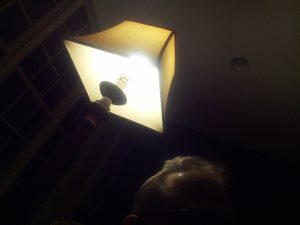Project Risks and Mitigation Strategies
At this point the only hardware delay we’re waiting on is the displays. The original displays ordered were cancelled, so similar alternate parts had to be identified and purchased- these come from sellers with much more recent activity, and before the parts were ordered we asked and received confirmation that they were still in stock, so we are much more hopeful that they will arrive when expected. We then, of course, have to hope they work- they fill the same technical niche as the original part, as small, lightweight displays with optical lenses meant for heads-up displays, but since they are slightly different we no longer have proof that the deconstruction we have planned will work exactly as expected.
Beyond hardware, another key area of risk is ensuring the gesture-based interactions function smoothly and intuitively. As part of my work on the gesture system, I have been refining the detection algorithms and ensuring that they align well with user expectations. The primary risk is potential latency or inconsistency in recognizing gestures, especially in dynamic environments. So I am looking vat sensitivity tuning and error correction methods to mitigate this.
Changes to System Design
No changes to the system design were made this week.
Schedule Progress
Independent schedule progress is addressed in our individual reports. While the order of some tasks has shuffled, our work is roughly on track.
Meeting Specific Needs
Part A was written by Diya, part B was written by Rebecca, and part C was written by __.
Part A: … with consideration of global factors.
The product solution we are designing aims to meet the need for intuitive and hands-free interaction in augmented reality environments. By incorporating a gesture-based input system, users can interact naturally without relying on physical controllers, improving accessibility and ease of use. The gesture recognition is designed to be responsive to gestures and adaptive to the users’ input.
Part B: … with consideration of cultural factors.
Food is, of course, a foundational part of just about every culture everywhere on Earth. It’s one of the first things people may turn to when trying to reconnect as an adult with a culture they may have missed out on, for various reasons, in childhood, or lost track of somewhere along the line- or when reaching out to friends and family of different cultures. But starting to learn how to cook, or learning how to cook in a style one is entirely unfamiliar with, can be a daunting undertaking; by lowering this barrier of entry, we hope that people will be more encouraged to attempt this particular path to connecting with a new culture, be it their own or their loved ones’.
Part C: … with consideration of environmental factors.
[ ]
We are trying to design as low of a cost environmentally as we can. Our physical frame is designed to last for long use, by being as sturdy as possible. We plan on using as small as an EC2 instance as needed to deploy our web app and store any databases. And inherently, cooking at home is better for the environment: less one time use plastics are used for packaging m, there are less delivery emissions, and food waste is lessened if someone is able to easier cook food that they want to eat when they want it. Our recipes included are all simple recipes, that aim to use ingredients that the user will probably already have: also reducing food waste. Overall, home cooking is more environmentally friendly than ordering takeout, which is an option that many people that don’t feel comfortable cooking at home will end up doing- CookAR hopes to bridge that gap and get people to start homecooking. Though there are additional environmental costs associated with creating a new physical glasses product and running a website, we aim to be intentional about what we design and what resources we use in a way that is as environmentally conscious as possible.





